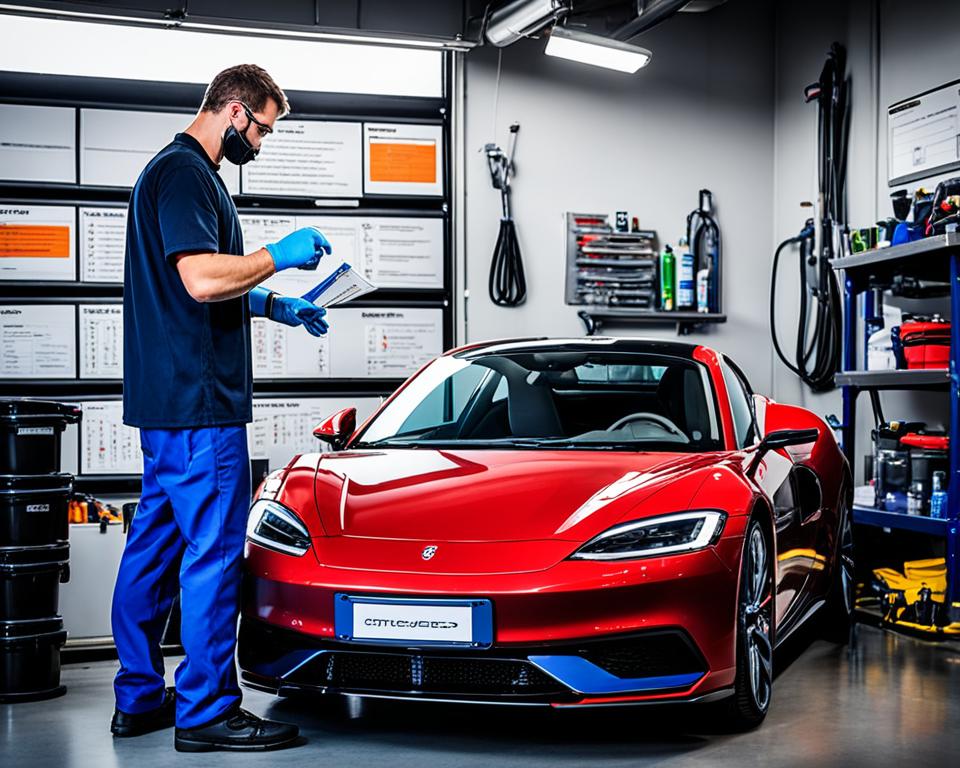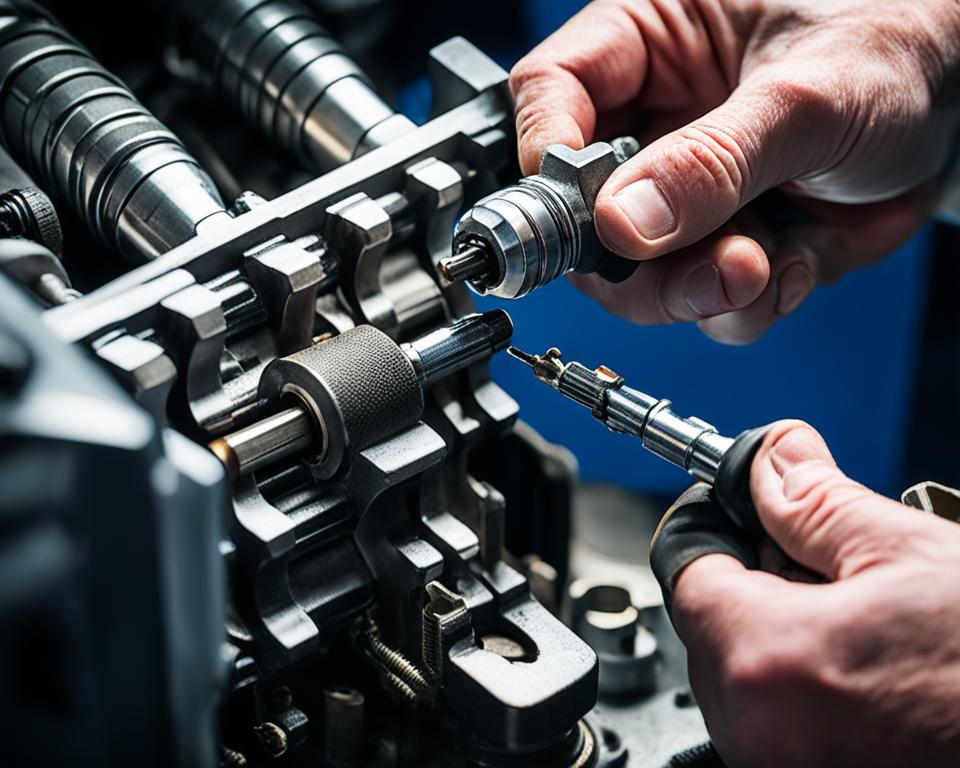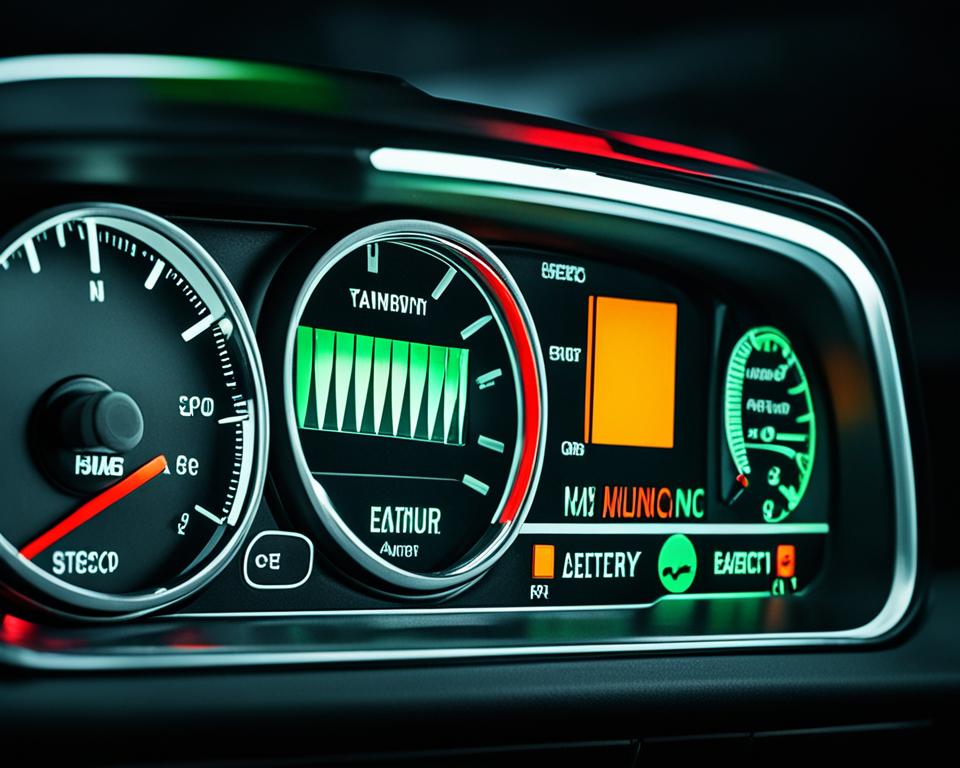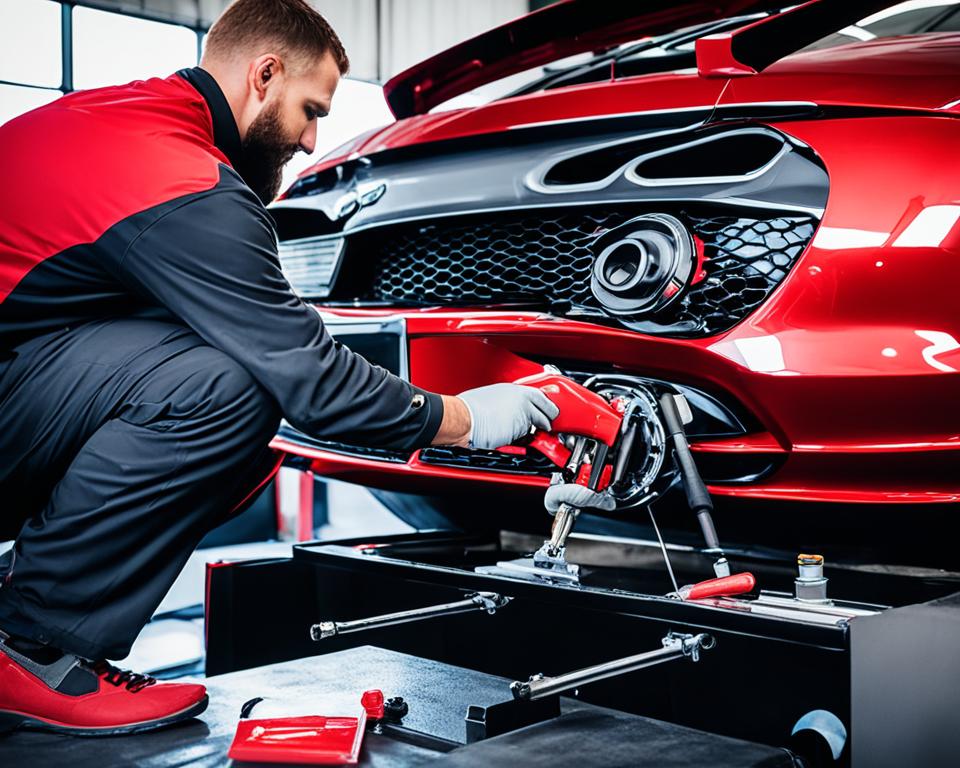As a proud owner of a high-end automobile, I understand the importance of preserving its excellence and ensuring its longevity. Proper maintenance is the key to keeping your prized vehicle in optimal condition and maximizing its performance. In this comprehensive guide, I will share valuable tips and techniques for maintaining your high-end automobile and provide insights into the impact of maintenance on its value and performance. Let’s dive in!
Key Takeaways:
- Regular maintenance is essential for preserving the excellence of your high-end automobile.
- Proper maintenance contributes to the longevity and performance of your vehicle.
- Incorporating routine car care into your daily life is crucial for maintaining your high-end automobile’s excellence.
- Understanding your car’s service manual guidelines and adhering to them is essential for optimal maintenance.
- DIY car maintenance techniques can help you take a hands-on approach to caring for your vehicle.
Embracing the Luxury Lifestyle Responsibly: The Importance of Regular Maintenance
When it comes to high-end automobiles, regular maintenance is not just a necessity but a philosophy. Luxury car maintenance goes beyond basic upkeep; it requires a deep commitment to excellence and attention to detail. Upholding the pristine condition of your luxury vehicle is essential for preserving its value, performance, and overall appeal.
The Philosophy Behind High-End Automobile Care
High-end automobile care is rooted in a profound understanding of craftsmanship and sophistication. Luxury vehicle owners recognize that their cars are more than just modes of transportation – they are works of art that demand meticulous care. Every curve, every finish, and every detail reflects the dedication of the designers and engineers who crafted the vehicle with precision. By embracing the philosophy behind high-end automobile care, owners honor the legacy of automotive excellence and uphold the standards set by renowned luxury brands.
Understanding the Impact of Maintenance on Car Value and Performance
Maintenance plays a crucial role in preserving the value and performance of a high-end automobile. Regular upkeep ensures that all components are functioning optimally, minimizing the risk of costly repairs and mechanical breakdowns. It also helps to retain the vehicle’s resale value, as buyers are more inclined to invest in a well-maintained luxury car. By performing routine inspections, adhering to recommended service intervals, and addressing issues promptly, owners can experience the full potential of their high-end automobiles for years to come.
In the next section, we will explore the ultimate car maintenance schedule for your prized vehicle, providing insights into deciphering your car’s service manual guidelines and emphasizing the importance of annual servicing. By following a comprehensive maintenance plan, you can ensure that your luxury car continues to exude excellence on every journey.
The Ultimate Car Maintenance Schedule for Your Prized Vehicle
Developing a comprehensive car maintenance schedule is crucial for ensuring the proper care of your prized vehicle. By adhering to a regular maintenance routine, you can extend the lifespan of your high-end automobile and keep it performing at its peak.
Deciphering Your Car’s Service Manual Guidelines
One of the first steps in establishing a car maintenance schedule is understanding your car’s service manual guidelines. The manual provides valuable information from the manufacturer regarding recommended maintenance intervals and tasks. It outlines specific inspection points, fluid changes, and other essential maintenance procedures to keep your vehicle in optimal condition.
Take the time to thoroughly read your car’s service manual and familiarize yourself with its content. Pay close attention to the recommended mileage intervals for routine maintenance tasks. This will ensure that you don’t overlook any crucial maintenance procedures that could impact the longevity and performance of your high-end automobile.
Annual Servicing: Non-Negotiable for Peak Performance
While regular maintenance tasks should be performed at specified intervals, annual servicing is a non-negotiable aspect of proper car care. Annual servicing involves a thorough inspection and servicing of various components to ensure everything is in proper working order.
An annual service typically includes:
- Oil and filter change
- Tire rotation and inspection
- Brake system check
- Fluid level inspection and top-up
- Battery inspection
- Belts and hoses inspection
- Diagnostic scan for any potential issues
By scheduling annual servicing, you can identify and address any underlying issues before they become major problems. This proactive approach helps maintain the peak performance of your high-end automobile and prevents costly breakdowns or repairs.

“Regular maintenance is the key to preserving your high-end automobile’s value and performance. By following the manufacturer’s guidelines and scheduling annual servicing, you ensure that your prized vehicle receives the care it deserves.”
Incorporating Routine Car Care into Your Daily Life
To maintain the excellence of your high-end automobile, it is essential to incorporate routine car care into your daily life. By integrating these car care tasks into your regular schedule, you can ensure that your vehicle receives the attention it deserves on a consistent basis. Here are some practical tips and strategies to help you make daily car care a seamless part of your routine:
- Perform regular visual inspections: Take a few moments each day to visually inspect your car for any signs of damage or wear. Look for dents, scratches, or loose parts, and address them promptly to prevent further issues.
- Check fluid levels: Regularly check the levels of essential fluids such as oil, coolant, and brake fluid. Maintaining proper fluid levels is crucial for the optimal performance and longevity of your vehicle.
- Keep your car clean: Regularly wash your car to remove dirt, dust, and debris that can accumulate on the exterior. Additionally, clean the interior to ensure a comfortable and hygienic driving experience.
- Maintain tire pressure: Check your tire pressure regularly and ensure they are properly inflated. Underinflated or overinflated tires can affect fuel efficiency, handling, and tire lifespan.
- Follow the recommended maintenance schedule: Refer to your car’s owner manual for the manufacturer’s recommended maintenance schedule. Adhering to this schedule will help keep your car in optimal condition.
By implementing these car care tips and tricks into your daily life, you can ensure that your high-end automobile remains in pristine condition. Consistent and proactive maintenance will not only enhance the performance and longevity of your vehicle but also protect your investment for years to come.
Advanced Techniques for DIY Car Maintenance
For car enthusiasts who prefer to take a hands-on approach, mastering advanced techniques for DIY car maintenance can be a rewarding endeavor. By expanding your skills beyond the basics, you can gain a deeper understanding of your vehicle and save money on repairs. In this section, we will explore two key areas of advanced car maintenance: mastering the basics of under-the-hood care and investing in high-end tools and equipment.
Mastering the Basics of Under-the-Hood Care
Under-the-hood care is a fundamental aspect of car maintenance, and mastering the basics can empower you to tackle a wide range of repairs and maintenance tasks. By familiarizing yourself with the components under the hood, you can confidently diagnose issues and perform necessary repairs. Here are some critical areas to focus on:
- Engine Oil: Regularly check your engine oil level and quality, and change it according to your vehicle’s manufacturer recommendations. Clean and sufficient oil is essential for optimal engine performance.
- Spark Plugs: Inspect and replace spark plugs regularly to ensure proper ignition and fuel combustion, improving fuel efficiency and overall engine performance.
- Air Filters: Clean or replace air filters to maintain a clean airflow into the engine, preventing dust and debris from causing damage.
- Battery Maintenance: Regularly check battery terminals for corrosion and ensure a secure connection. Clean any buildup and test the battery’s voltage to ensure it is holding a charge.
By investing time in understanding these fundamental aspects of under-the-hood care, you can confidently perform routine maintenance tasks and address minor issues before they escalate into major problems.
High-End Tools and Equipment Worth the Investment
When it comes to DIY car maintenance, having the right tools and equipment can make a significant difference in both ease and quality of work. While some tools are essential for basic maintenance, advanced techniques may require specialized tools that are worth the investment. Here are some high-end tools and equipment that can enhance your DIY car maintenance capabilities:
- Torque Wrench: A torque wrench ensures that bolts and nuts are tightened to the manufacturer’s specifications, preventing damage and ensuring proper assembly.
- OBD-II Scanner: An OBD-II scanner allows you to diagnose and identify engine problems by accessing the vehicle’s onboard diagnostic system. It provides valuable information that can help you make accurate repairs.
- Car Lift: A car lift allows for easy access to the undercarriage of your vehicle, making tasks such as oil changes and inspections more convenient and efficient.
- Diagnostic Software: High-end diagnostic software can provide advanced functionality and detailed diagnostics for specific vehicle models, giving you greater insight into your car’s performance.
Investing in these high-end tools and equipment can streamline your DIY car maintenance processes and enable you to tackle more complex repairs with confidence. However, it is essential to research and choose tools that are suitable for your specific vehicle make and model.
As you continue to refine your DIY car maintenance skills and expand your knowledge, remember to prioritize safety and follow manufacturer instructions for all repairs and maintenance tasks. With advanced techniques and the right tools at your disposal, you can take pride in maintaining your high-end automobile while saving time and money in the process.

Vehicle Maintenance Checklist: Your Roadmap to Longevity
A vehicle maintenance checklist is an essential tool to ensure that no maintenance task is overlooked. By following a comprehensive checklist, you can provide your high-end automobile with the thorough care it needs to achieve longevity. From regular fluid checks to tire inspections and everything in between, this checklist covers all the essential aspects of car care.
Proper maintenance is vital for preserving the performance, reliability, and value of your high-end automobile. By adhering to a vehicle maintenance checklist, you can proactively address potential issues and prevent costly repairs down the line. Regular inspections and maintenance tasks help identify and resolve minor problems before they escalate.
Whether you rely on professional car service or prefer to perform maintenance tasks yourself, a checklist ensures that you cover all the necessary aspects of car care. It serves as a roadmap, guiding you through the process and ensuring that no important maintenance tasks are overlooked.
Here is a comprehensive vehicle maintenance checklist that covers the key areas of car care:
| Checklist Item | Frequency |
|---|---|
| Engine oil and filter change | Every 3,000 to 5,000 miles or as recommended by the manufacturer |
| Fluid checks (brake fluid, coolant, power steering fluid, transmission fluid, windshield washer fluid) | Every month or as recommended by the manufacturer |
| Battery inspection and cleaning | Every 6 months |
| Tire inspection, rotation, and pressure check | Every month or as recommended by the manufacturer |
| Brake inspection | Every 6 months or as recommended by the manufacturer |
| Air filter replacement | Every 12 months or as recommended by the manufacturer |
| Spark plug replacement | Every 30,000 to 100,000 miles or as recommended by the manufacturer |
| Belts and hoses inspection | Every 6 months or as recommended by the manufacturer |
| Exterior and interior cleaning | Regularly |
By following this comprehensive checklist and adhering to the recommended frequencies, you can ensure that your high-end automobile receives the thorough care it needs to thrive. Whether you enjoy the satisfaction of performing car maintenance tasks yourself or prefer to rely on professional car service, this checklist will assist you in keeping your vehicle in optimal condition for years to come.
Car Maintenance Tips: Protecting Your Investment on the Road
In this section, I will share valuable car maintenance tips that will help protect your investment on the road. By incorporating these tips into your car care routine, you can ensure that your vehicle remains in optimal condition and maintains its value over time.
Driving Habits that Enhance Long-Term Performance
One of the most effective ways to protect your investment is by developing driving habits that promote long-term performance. Here are some tips to keep in mind:
- Practice smooth acceleration and braking to reduce wear and tear on your vehicle’s engine and braking system.
- Avoid sudden starts and stops, as they can put unnecessary stress on your car’s components.
- Maintain a consistent speed on the highway to minimize strain on the engine and improve fuel efficiency.
- Follow the manufacturer’s recommended maintenance schedule to ensure that your vehicle receives regular check-ups and necessary repairs.
By adopting these driving habits, you can extend the lifespan of your car and enhance its overall performance.
Dealing with Common Issues Before They Escalate
Addressing common car issues promptly can save you from major problems down the line. Here are some proactive strategies to deal with common car issues:
- Regularly check and replace your car’s fluids, including engine oil, coolant, and transmission fluid, to prevent damage and ensure smooth operation.
- Inspect your tires regularly for signs of wear and tear, and maintain proper tire pressure to enhance safety and extend tire life.
- Listen for unusual noises or vibrations while driving, as they can be indicators of underlying problems. If you notice any, consult with a professional mechanic for a thorough inspection.
- Keep an eye on warning lights on your dashboard and address any issues indicated promptly.
By being proactive in dealing with common car issues, you can prevent them from becoming larger, costlier problems.
| Car Maintenance Tip | Description |
|---|---|
| Regular Fluid Checks | Maintain proper fluid levels and replace fluids as recommended by the manufacturer. |
| Tire Inspections | Regularly check tire condition and pressure for optimal safety and performance. |
| Addressing Unusual Noises | Listen for unusual noises and vibrations while driving, and seek professional advice if necessary. |
| Monitoring Warning Lights | Promptly address any warning lights on your dashboard to prevent potential issues. |
By following these car maintenance tips and being proactive in addressing issues, you can protect your investment and enjoy a reliable and well-maintained vehicle for years to come.
Understanding the Signs: When Professional Car Service is Necessary
Recognizing the signs that professional car service is necessary is crucial for addressing issues in a timely manner. Ignoring these signs can lead to further damage and costly repairs. In this section, we will discuss two important aspects of determining when it’s time to seek professional assistance: dashboard indicators and the sounds and symptoms of auto distress.
Dashboard Indicators and What They Mean for Your Car
Your car’s dashboard is equipped with various warning lights that indicate potential problems with different systems. It’s essential to understand the meanings behind these indicators to take appropriate action. Let’s explore some common dashboard indicators and their implications:
- Check Engine Light: This light typically signifies an issue with the engine or its related components. It’s important to have it checked by a professional to identify and resolve any underlying problems.
- Oil Pressure Warning Light: If this light illuminates, it indicates that the engine is not receiving adequate oil pressure. Low oil pressure can lead to engine damage if not addressed promptly.
- Battery Warning Light: When this light is on, it suggests an issue with the vehicle’s charging system. It could be due to a faulty battery, alternator, or other electrical components.
These are just a few examples of dashboard indicators that require immediate attention. If any warning light persists or flashes while driving, it’s crucial to schedule a professional car service to diagnose and resolve the problem.
Interpreting the Sounds and Symptoms of Auto Distress
In addition to dashboard indicators, your car may exhibit various sounds and symptoms that indicate potential issues. Being able to interpret these sounds and symptoms can help you identify when professional car service is necessary. Here are some common examples:
- Squealing or Grinding Brakes: Unusual noises when applying the brakes can indicate worn brake pads or other brake system problems that require attention.
- Excessive Vibration: If you notice excessive vibration while driving, it could be a sign of tire imbalance or issues with the suspension system.
- Engine Misfiring: A misfiring engine can cause poor performance, rough idling, or a noticeable lack of power. It may indicate problems with the fuel system, ignition system, or other engine components.
These are just a few examples of sounds and symptoms that should not be ignored. It’s important to consult with a professional car service provider to accurately diagnose and address these issues before they escalate.
By paying attention to dashboard indicators and being aware of the sounds and symptoms of auto distress, you can take proactive measures to ensure the longevity and performance of your high-end automobile.

Best Practices for Car Maintenance to Prevent Costly Repairs
Preventing costly car repairs starts with implementing best practices for car maintenance. By adopting proactive maintenance practices, you can minimize the risk of unexpected breakdowns and costly repairs, ensuring the long-term health and performance of your high-end automobile. Here are some valuable tips and strategies to help you avoid major repair expenses:
- Follow the manufacturer’s maintenance schedule: Regularly refer to your car’s service manual and follow the recommended maintenance intervals for essential tasks such as oil changes, filter replacements, and inspections.
- Perform regular fluid checks: Check and top up essential fluids such as engine oil, coolant, brake fluid, and power steering fluid to maintain proper levels and prevent damage from insufficient lubrication or overheating.
- Inspect and maintain tire pressure: Regularly check your tire pressure and ensure they are properly inflated. Improper tire pressure can lead to decreased fuel efficiency, uneven tire wear, and compromised handling.
- Keep up with regular inspections: Schedule routine inspections of your vehicle’s components, including brakes, suspension, belts, and hoses. Identifying and addressing potential issues early can help prevent more extensive damage down the line.
- Keep your car clean: Regularly wash your car and apply a protective wax coating to prevent damage from dirt, grime, and environmental elements. Cleaning the interior can also help maintain the condition of your upholstery and prevent the buildup of dirt and debris.
By following these best practices for car maintenance, you can minimize the likelihood of costly repairs, extend the lifespan of your high-end automobile, and ensure it continues to offer an exceptional driving experience for years to come.
Vital Car Upkeep Tips for Seasonal Changes and Storage
Seasonal changes and storage require specific car upkeep to ensure optimal performance and preservation. It is important to adapt your car maintenance routine to the changing seasons and properly prepare your high-end automobile for winter challenges. Additionally, when storing your vehicle for an extended period, it is crucial to take measures to maintain its excellence. In this section, we will provide vital car maintenance tips for each season and guide you through the necessary steps for successfully navigating seasonal changes and storage.
Preparing Your High-End Automobile for Winter Challenges
Winter can be especially harsh on vehicles, presenting various challenges that need to be addressed. Follow these essential car maintenance tips to prepare your high-end automobile for winter:
- Check and replace worn-out tires to ensure proper traction on icy or snowy roads.
- Top up your antifreeze to the recommended level to prevent freezing and potential engine damage.
- Replace old wiper blades and make sure your windshield washer fluid is winter-grade.
- Inspect your battery and its connections, as cold weather can be tough on battery performance.
- Keep an emergency kit in your car, including items like a snow brush, ice scraper, jumper cables, and a blanket.
Maintaining Excellence in Your Vehicle During Prolonged Storage
If you need to store your high-end automobile for an extended period, it’s crucial to take the necessary steps to maintain its excellence. Here are some tips for properly storing your vehicle:
- Clean your car thoroughly, both inside and out, to prevent damage from dirt or debris.
- Apply a protective wax or sealant to the exterior to shield the paint from dust and other contaminants.
- Keep the fuel tank at least half full to prevent moisture buildup and fuel system issues.
- Disconnect the battery or use a battery trickle charger to maintain its charge during storage.
- Place a breathable car cover over your vehicle to protect it from dust and scratches.
Conclusion
Ensuring Your High-End Automobile’s Excellence Through Commitment
Leaving a Legacy of Pristine Performance for Future Generations
Throughout this comprehensive guide, we have highlighted the importance of commitment to car maintenance in order to ensure the long-term excellence of your high-end automobile. By following the advice and tips provided, you can take proactive steps to preserve the performance and value of your prized vehicle.
Investing time and effort into proper car care is not only beneficial for your own driving experience, but it also leaves a lasting legacy for future generations. By maintaining your high-end automobile in optimal condition, you are setting an example of excellence and showcasing the true potential of these remarkable vehicles.
Whether it’s through regular maintenance, incorporating routine car care into your daily life, or understanding the signs that professional car service is necessary, your commitment to car maintenance demonstrates your dedication to preserving the performance and longevity of your high-end automobile.
By embracing the philosophy of high-end automobile care and prioritizing maintenance, you are ensuring that your vehicle will continue to perform at its best for years to come. So, commit to the ongoing care of your high-end automobile, leaving a legacy of pristine performance that future generations can appreciate and enjoy.

